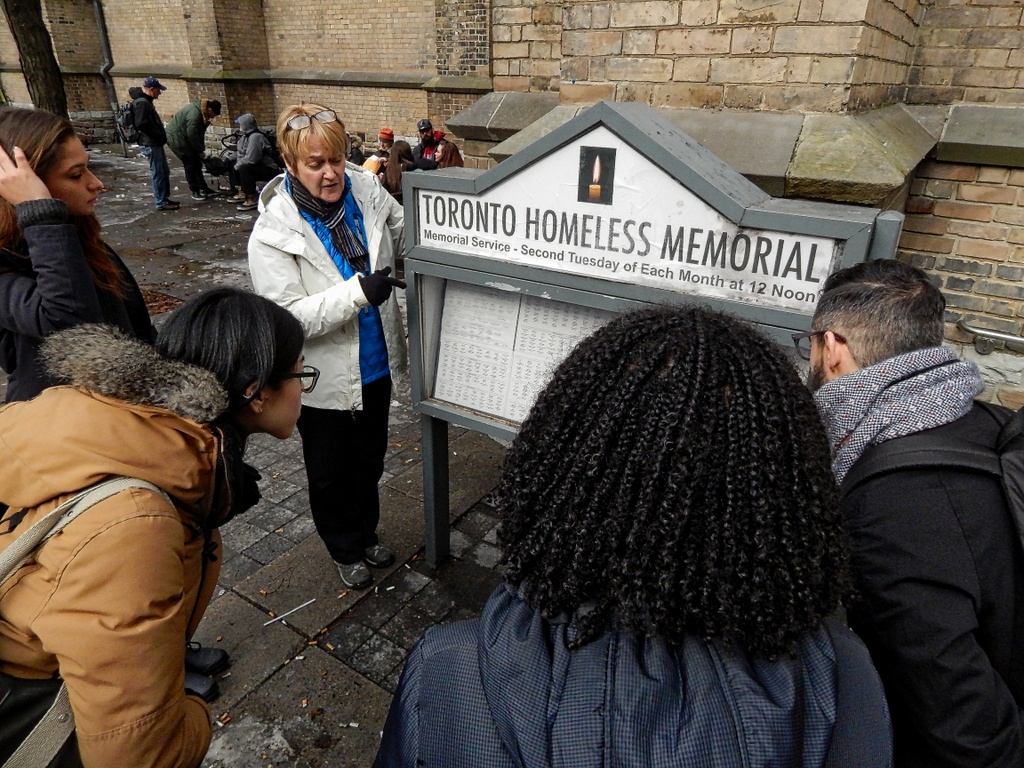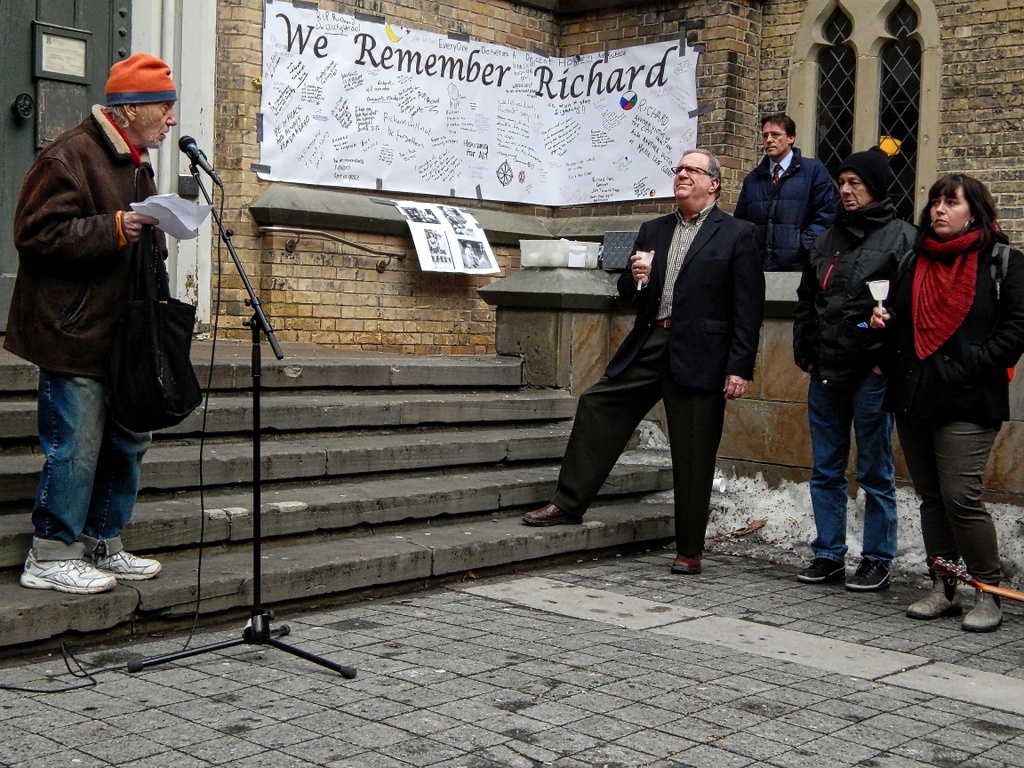His name was Richard Kenyon.
He died last month near the corner of Church and Carlton on the sidewalk outside a Loblaws store in downtown Toronto.
Just 51 years old, he was homeless but lived in the Seaton House shelter in the Downtown Eastside.
“While we do not know what Richard’s last day looked like, we do know that he was lying dead at a busy intersection of the City during the middle of the day,” said the Ontario Coalition Against Poverty (OCAP) in a written release.
“We know for a fact that on a busy shopping day just before Christmas many people must have walked by him and did what is all too common place — they chose to ignore a person lying on the ground.”
Following his death, OCAP held a vigil on the corner where Richard died, creating a makeshift memorial with bouquets of flowers taped to a metal tree container. Candles were placed at the base of the tree. Messages of condolence and calls for more affordable housing were left for passersby to read.
A giant banner with “We Remember Richard” scrawled across the top and numerous condolence messages was duct-taped to the wall outside the 85,000 square foot retail space, the former home of the Toronto Maple Leafs where as a boy Richard dreamed of playing hockey.
“Remember Richard and all those who have died too soon,” said OCAP.
“Join us in calling for action on homelessness — everyone deserves safe, affordable, and accessible housing. Everyone deserves enough income to live with health and dignity. Everyone deserves a warm place to rest in the daytime. Everyone deserves a chance to live out their life to the fullest.”
His sister, who now lives in British Columbia, sent OCAP photos of Richard as a boy as well as a letter she’d written and asked to be read aloud at the vigil.
At Tuesday’s monthly homeless vigil held outside the Church of the Holy Trinity, her letter was read aloud again by OCAP’s Liisa Schofield.
“Like so many who have due to circumstances turned to the street, you were selfless,” wrote Susan Kenyon Lowe.
“Never wanting to impose on others, it was your sensitivity and selflessness that we loved you for.”
A far cry from the way homeless people are often negatively portrayed in the mainstream.

“Very rarely are any of these people ever acknowledged officially,” said Michael Shapcott, Director, Affordable Housing and Social Innovation at the Wellesley Institute.
“But if they are, often the words that are used are ‘no sign of foul play’ or ‘natural causes.’ And that’s obscene when those words are used because there is nothing natural about the more than 730 people who’ve died on the streets of Toronto.”
In 1998, author and educator Ursula Franklin referred to homelessness as a “man-made disaster.”
In 2010, the City of Toronto spent $854 million on housing and homelessness programs, but the 2014 budget only calls for $636 million.
“And those budget cuts are not just numbers on a piece of paper,” said Shapcott.
“They’re the reason why so many people are dying on our streets. Because when funding is cut for new affordable housing that means fewer homes and people are forced onto the deadly, dangerous conditions of the streets.”
Things can be turned around by making future investments. And that, said Shapcott, is supported by the majority of Canadians “even if it means raising their taxes.”
In the meantime, the homeless death toll continues to rise.
Even attempts by homeless activists to persuade the City to open up more warming centres during the cold winter months have been met with much resistance.
And the few that are opened aren’t always accessible to everyone. Especially to those who live on the streets.
In the last year, OCAP has made several trips to City Hall to pressure the mayor and councillors to open up new shelter spaces.
“Overcrowding is pushing people into the streets and the conditions are intolerable,” said Schofield.
In December, OCAP said they managed to convince the Community, Development and Recreation committee to open up warming centres during extreme cold weather alerts.
Alerts are called when the daytime temperature fall to -15 C, without the windchill. But so far the City has opened only one warming centre at Metro Hall as a pilot.
“It’s almost as if they opened it up both hesitantly and they refused to provide the basic comforts anyone should deserve in a warming centre,” said Schofield.
During the December ice storm in Toronto, warming centres provided warm food, cots and blankets.

“Some even had access to showers. (But) the warming centre at Metro Hall for homeless people only had tables and chairs, a roped off area in the centre under florescent lights, no warm food, no cots, no blankets.”
During future cold weather alters, OCAP plans to push for cots, mats and hot food.
“And as such we will be bringing these necessities to people who are using the warming centre at Metro Hall,” said OCAP in a written release.
“We are currently in the process of rounding up mats (yoga or sleeping), cots, sleeping bags and blankets to be distributed to folks using Metro Hall during the next cold alert.”



